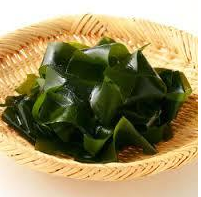
The most commonly consumed seaweed types include wakame and kombu, two types of brown seaweed; and nori.
- Does seaweed have health benefits?
It may—and it’s long been used as a remedy for a variety of ailments. Seaweed’s potential role in health dates as far back as the Ebers Papyrus in 1500 bce, which cited it as a remedy for tumors. Traditional Chinese medicine relied on seaweed as a treatment for everything from goiter to urinary tract infections. In the present day, many animal and lab studies point to seaweed’s promising potential health benefits. For example, lab studies have found that fucoidans, a polysaccharide in seaweed, have antiviral activity and can induce cell death in human colon cancer cells; human studies have suggested that they decrease the rate of sugar absorption after eating.
In addition, a small study of postmenopausal womenin the Journal of Applied Phycology found that consuming seaweed in capsule form was linked with reduced levels of a molecule involved in cancer cell signaling. The authors postulated that this might help explain the lower rates of breast cancer among Japanese women who consume lots of seaweed. And a case-control studyin 2010 in the British Journal of Nutrition linked a high seaweed intake with a reduced risk of breast cancer among women in South Korea.
Seaweed may also contain chemicals that benefit cholesterol levels, and it may have anti-inflammatory and antioxidant properties. Given the many nutrients and phytochemicals found in seaweed, a review paperin 2015 in Phycologia concluded that manufacturers should make more use of seaweed in food products as a way to reduce the risk of cardiovascular disease.
- What nutrients are in seaweed?
Seaweed offers varying levels of protein depending on type. Seaweed is a rich source of several vitamins, including vitamin A (in the form of carotenoids), vitamin C, vitamin D, vitamin E, and B vitamins. Like kale and some other leafy greens, seaweed also contains vitamin K, which plays a role in blood clotting. People who take anti-clotting medications, such as warfarin, may need to observe certain precautions when consuming foods high in vitamin K. To learn more, see Warfarin and Vitamin K.
Seaweed is also a rich source of several minerals, including calcium, magnesium, potassium, copper, and iron. Seaweed also has a high iodine content, especially the brown-algae varieties. While that generally isn’t a concern, it may make seaweed risky for people who have overactive or underactive thyroids. If you have a thyroid condition for which a low-iodine diet is recommended, it’s a good idea to talk with your doctor first before consuming seaweed products.
- Is seaweed a good source of fiber?
Yes, especially soluble fiber, which can increase satiety (the feeling of fullness) and helps to lower LDL (bad) cholesterol. Dulse seaweed has more than 5 grams of fiber (mostly soluble) per 3.5 oz, and kombu contains more than 6 grams, almost all soluble. One type of seaweed fiber, alginate, may block the absorption of fat in the digestive tract; it may also help treat heartburn, which is why it is the active ingredient in over-the-counter antacids such as Gaviscon. Seaweed also contains agar, carrageenans, and other polysaccharides that are not only good sources of fiber, but can also act as prebiotics, which may be of benefit to the bacteria (microbiota) in the large intestine.
- Does seaweed contain omega-3s, like fish and shellfish do?
Yes. Despite being low in fat, many species of seaweed are rich in omega-3s: both the long chain EPA as well as the shorter chain alpha linolenic acid. Somespecies also contain DHA, the other long-chain omega-3 commonly found in fish and shellfish.
- Because seaweeds are plants, do they contain antioxidants?
Yes. Seaweed contains not only the antioxidant vitamins C and E, but also an array of phytochemicals, such as polyphenols and fucoxanthin, a type of carotenoid. This gives the various species high antioxidant activity. It’s not surprising that seaweed contains such a variety of antioxidants, since the sea vegetables live in a relatively hostile environment marked by fluctuations in water supply and temperature, high levels of exposure to UV light, and high salt concentration. It’s hypothesized that seaweeds produce these compounds to protect their polyunsaturated fatty acid molecules from being oxidized by ultraviolet light and oxygen.
【Reference】http://www.berkeleywellness.com/healthy-eating/food/article/6-things-know-about-seaweed






